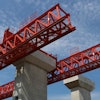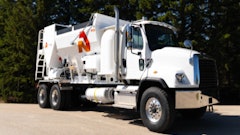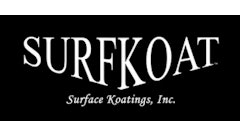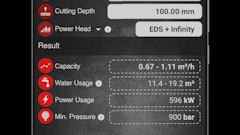Insurance is perhaps one of the most overlooked yet consequential aspects of construction contracting. Almost every contract involving construction imposes obligations on the parties to obtain insurance, but many do not take the time to understand what they are required to procure Because insurance is based on the agreement between the insurer and insured, the policy is usually the first place to start. The insurance policies discussed below are based on typical form policy provisions, but contractors and insured should check their specific policy to determine the extent of coverages and exclusions.
CGL Policies
One of the more commonly required insurance is commercial general liability (“CGL”) insurance. This insurance is intended to protect the insured against claims for bodily injury or property damage caused by an “occurrence” that happens during the policy period. An “occurrence” is defined in most policies as an accident. But its true meaning has been debated and determined by numerous courts around the country, especially in the context of construction-related damages.
CGL insurance provides recovery for covered damages that the insured is obligated to pay, and to the extent such damages are sought against the insured in a lawsuit, the insurer provides a legal defense.
CGL insurance generally excludes coverage for contractual liability (i.e., liability assumed by the insured pursuant to a contractual agreement); damage arising out of the insured’s and its subcontractors’ operations or work; faulty workmanship by or on behalf of the insured; employer liabilities; pollution liability; and property owned, rented, or occupied by the insured.
Endorsements impact the coverages and exclusions under a policy. For example, some endorsements exclude coverage for liability arising out of the insured’s professional services. Another endorsement eliminates the “subcontractor exception” to the “completed operations/your work” exclusion. In plain English, such an endorsement eliminates coverage that otherwise might be provided for property damage arising from work completed by the insured’s subcontractors.
CGL policies with their inclusions and exclusions -- especially after the impact of endorsements – can be very difficult to correctly interpret. Accordingly, it is best to consult insurance experts and construction attorneys when selecting policies and endorsements. This is especially true when seeking to recover on the policy or require an insurer to provide litigation defense.
Builder’s Risk Policies
Builder’s risk (“BR”) policies cover loss or damage to property for which the insured is legally responsible to protect or maintain during construction. The loss or damage must result from specific causes, such as fire, smoke, lightning, wind, hail, and explosion. After construction or after the insured no longer has any responsibility concerning the project property, the owner’s property insurance policy provides coverage for such losses.
BR policies generally cover loss or damage to the project building under construction and materials and supplies used in the project. The declarations page contains important details concerning the extent of BR coverage. Unless otherwise provided in the declarations page, BR policies generally do not cover damage to existing buildings or to structures, land, and vehicles.
Professional Liability / E&O Insurance Policies
Professional liability (“PL”) policies protect insureds against damages arising from professional services. They are typically purchased by architects, engineers, construction managers, and design-builders. Many CGL policies have endorsements that exclude coverage for professional services, such as providing engineering or architectural services or preparing drawings, specifications, reports, and opinions. Accordingly, to the extent an insured provides any professional services, either directly or indirectly, it is best to procure a PL policy or add a CGL endorsement that provides professional indemnity coverage.
PL policies are usually claims-made policies, which means the claims must occur during the policy period. Thus, to ensure the policy provides continuing coverage, it must be renewed during the period of potential exposure. Like CGL policies, they require the insurer to provide litigation defense against covered claims. As a downside, defense costs reduce the policy limit. PL policies are also known to have substantial deductibles.
Pollution Coverage
In most cases, CGL policies exclude coverage for damages caused by pollution. But insureds may procure coverage for pollution-related damages, including clean-up costs and litigation defense. Such policies are commonly referred to as “Contractors Pollution Liability Policies.” Concrete contractors with significant exposure to pollution liability should not rely on their CGL policies and should instead consider obtaining coverage specifically designed for pollution liability.
Cyber Coverage
As more contractors – and everyone else in the developed world – face growing risks from cyber threats, it is worth considering whether these risks are adequately addressed. As a first line of defense, the insured should implement security processes for its digital assets. But as cyber attackers evolve, there is really no way to guarantee against an attack. So contractors should consider the various forms of cyber insurance as a means to mitigate cyber risk.
Statutory and Other Insurance
There are many other types of insurance that may be desirable or even required by contract. Some of these include insurance coverages that are required by state law. These policies include, for example, workers’ compensation and automobile insurance. Workers’ compensation insurance protects the employer against personal injuries resulting from employees’ job-related injuries. The policy requirements and limits are set by state law, along with any lawsuit immunity for employers.
Contractors should beware the practice of treating persons as independent contractors for workers’ compensation and other purposes when such persons are more properly characterized as employees. When these persons are injured and seek recovery under the workers’ compensation system, the deemed-employers may be subject to penalties and other liability for the misclassification.
Another type of statutory insurance is automotive insurance, which covers personal injury and property damage arising from accidents. Such coverage is usually excluded from CGL policies Contractors should ensure their commercial auto insurance policy covers the types of vehicles or equipment used in their operations; otherwise, they should obtain additional coverage specific to such vehicles or equipment.
References:
- Bruner & O’Connor Construction Law, Chapter 11 (Insurance) (Aug. 2017 Update).
- Construction Business Handbook, Robert Frank Cushman, Aspen Publishers (2003).
- Insurance Services Office, Inc. Insurance Policy Forms.
- International Risk Management Institute, Inc., www.irmi.com
About the Author:
David R. Cook is a partner at the Atlanta-based law firm, Autry, Hall & Cook, LLP. He practices in the firm’s construction law group, representing specialty contractors in connection with their contract negotiation and drafting, commercial and corporate transactions, and dispute resolution, litigation, and arbitration of construction claims. His profile and contact information are found at www.ahclaw.com. Contact David at [email protected] or 770-818-4442.




















